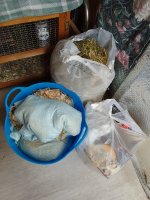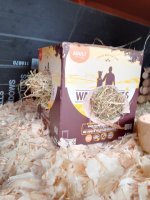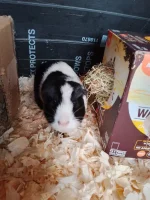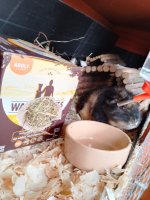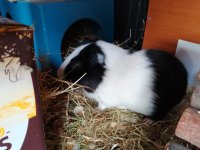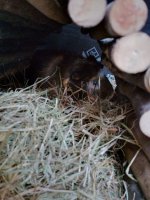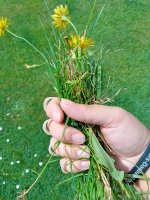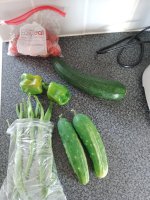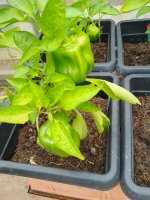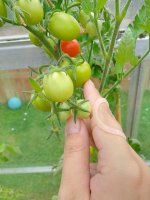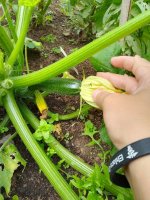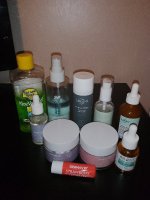Hi all, it's been a while since I have done one of these and so much has changed! (In my last 'week in the life of' I had 8 guinea pigs, 2 dogs and a hamster.)
Day 1
I started the day off at 7am and put the pooches out in the garden to do their business and stretch their legs. I have to make myself a cup of tea or I will not be able to function and will be stumbling through the day like a zombie.
Once energised, I fed the crew as well as washed/disinfected all bowls and bottles. I try to deep clean and disinfect everything once a week as gunk can build up in spouts and bacteria can hide anywhere. I use F10 for the bowls and cold water sterilisation tablets meant for baby bottles for the pig bottles. I use cotton buds to really scrub the inside of the nozzles. You'd be surprised how much gunk is up there!
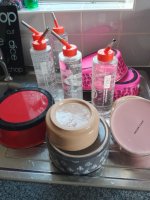
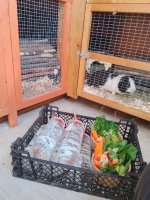
Water bowls/bottles were refilled and placed back in the exact same place as my one dog, Pebbles, is blind, so I like to keep it in the same place so she can find it. Pebbles went blind at a young age as she has a genetic condition called progressive retinal atrophy (PRA). This is a gradual and painless disease that will rob her of her sight but nothing else. There is an increased risk of eye injury and glaucoma so we really keep an eye out for any changes (no pun intended, lol). Pebbles also has an autoimmune condition which attacks her tear ducts meaning she doesn't produce enough tears to lubricate her eyes. This is called keratoconjunctivitis sicca (KCS). So everyday, morning and night, for the rest of her life she needs eye drops to stimulate her tear glands to help manage this condition.
I then prep veggies for the pigs, today they have pepper, celery, cucumber, green beans, carrots, broccoli, cos lettuce and coriander. They only have broccoli/cabbage and carrots/parsnip once a week. A couple of the pigs have sensitive tummies and too much broccoli/cabbage makes them bloat. Carrots, parsnips and other root veggies are high in sugars and despite what anyone tells you, obesity and diabetes can still occur in guinea pigs just like in any other creature, they are not immune! We are seeing an increase in obesity in piggies which can lead to diabetes and other problems like heart disease and joint pain.
I checked the temperature in the shed and it was a nice 23°C. Guinea pigs are quite sensitive to temperatures so a thermometer provides peace of mind. Generally anything between 15°C-25°C is considered ok. Anything outside that can be problematic. Obviously it depends on how quick the temperature change is and what is considered 'normal' in your area. For example, if there's a gradual increase to 28-29°C over a week, they're more likely to be ok than if it jumps suddenly, as they've had time to adapt. Currently I know that I can keep pigs comfortable in the shed from -5°C-30°C. It takes a lot of work but I also know my limits and as soon as I think it's going to go beyond those limits, I start transferring them indoors.
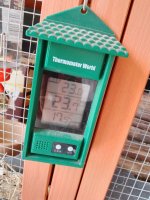
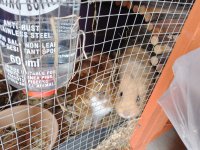
(Blossom and Cyril popping out to say hi).
After lunch I made a start on cleaning out the hutches which took until dinner time. It doesn't normally take this long but I have been struggling with my mobility these past few weeks so everything seems to take so much longer.
I use spruce shavings with puppy pads underneath (no they don't chew them). I then add meadow hay in easy to reach spots which makes it easier when I spot clean over the next few days.
I'm currently using nature's own meadow hay. They come in 3.5kg bales and in compostable bags. How amazings that?! It can be difficult to find environmentally friendly options when it comes to caring for our pets, but I do try my best. Their meadow hay is soft enough for hamsters and gerbils too.
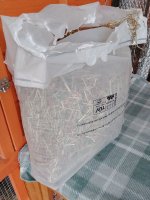
Day 1
I started the day off at 7am and put the pooches out in the garden to do their business and stretch their legs. I have to make myself a cup of tea or I will not be able to function and will be stumbling through the day like a zombie.
Once energised, I fed the crew as well as washed/disinfected all bowls and bottles. I try to deep clean and disinfect everything once a week as gunk can build up in spouts and bacteria can hide anywhere. I use F10 for the bowls and cold water sterilisation tablets meant for baby bottles for the pig bottles. I use cotton buds to really scrub the inside of the nozzles. You'd be surprised how much gunk is up there!


Water bowls/bottles were refilled and placed back in the exact same place as my one dog, Pebbles, is blind, so I like to keep it in the same place so she can find it. Pebbles went blind at a young age as she has a genetic condition called progressive retinal atrophy (PRA). This is a gradual and painless disease that will rob her of her sight but nothing else. There is an increased risk of eye injury and glaucoma so we really keep an eye out for any changes (no pun intended, lol). Pebbles also has an autoimmune condition which attacks her tear ducts meaning she doesn't produce enough tears to lubricate her eyes. This is called keratoconjunctivitis sicca (KCS). So everyday, morning and night, for the rest of her life she needs eye drops to stimulate her tear glands to help manage this condition.
I then prep veggies for the pigs, today they have pepper, celery, cucumber, green beans, carrots, broccoli, cos lettuce and coriander. They only have broccoli/cabbage and carrots/parsnip once a week. A couple of the pigs have sensitive tummies and too much broccoli/cabbage makes them bloat. Carrots, parsnips and other root veggies are high in sugars and despite what anyone tells you, obesity and diabetes can still occur in guinea pigs just like in any other creature, they are not immune! We are seeing an increase in obesity in piggies which can lead to diabetes and other problems like heart disease and joint pain.
I checked the temperature in the shed and it was a nice 23°C. Guinea pigs are quite sensitive to temperatures so a thermometer provides peace of mind. Generally anything between 15°C-25°C is considered ok. Anything outside that can be problematic. Obviously it depends on how quick the temperature change is and what is considered 'normal' in your area. For example, if there's a gradual increase to 28-29°C over a week, they're more likely to be ok than if it jumps suddenly, as they've had time to adapt. Currently I know that I can keep pigs comfortable in the shed from -5°C-30°C. It takes a lot of work but I also know my limits and as soon as I think it's going to go beyond those limits, I start transferring them indoors.


(Blossom and Cyril popping out to say hi).
After lunch I made a start on cleaning out the hutches which took until dinner time. It doesn't normally take this long but I have been struggling with my mobility these past few weeks so everything seems to take so much longer.
I use spruce shavings with puppy pads underneath (no they don't chew them). I then add meadow hay in easy to reach spots which makes it easier when I spot clean over the next few days.
I'm currently using nature's own meadow hay. They come in 3.5kg bales and in compostable bags. How amazings that?! It can be difficult to find environmentally friendly options when it comes to caring for our pets, but I do try my best. Their meadow hay is soft enough for hamsters and gerbils too.

Last edited by a moderator:

